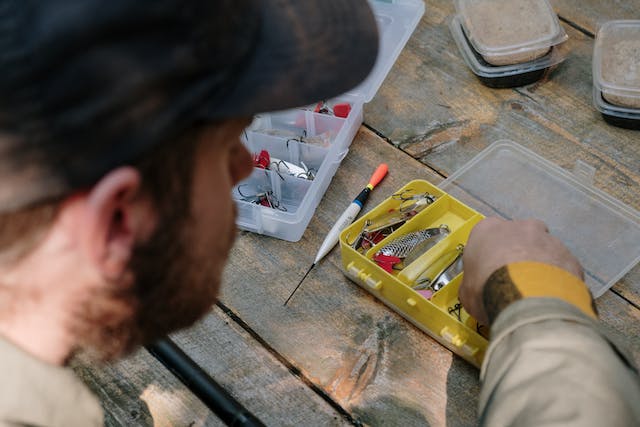
-
Target Species: Different fish species have different feeding habits and preferences. Research the species you're targeting to understand what types of lures are most effective.
-
Water Conditions: Consider the water clarity, temperature, and depth. For example, in clear water, more natural and subtle colors may work best, while in murky water, brighter and more visible lures might be more effective.
-
Lure Type:
- Hard Baits: These include crankbaits, jerkbaits, and topwater lures. They are typically made of plastic or wood and mimic the appearance and motion of prey fish.
- Soft Baits: These are made of soft plastics and can resemble worms, grubs, or other creatures. They have a realistic feel and movement in the water.
- Spinnerbaits and Jigs: These lures have a metal blade that spins as they move through the water. They are versatile and can be used in various fishing conditions.
- Spoons: These are metal lures that imitate the flash and movement of a wounded baitfish.
-
Color: Choose lure colors that mimic the natural prey of the fish you're targeting. Brighter colors can work well in low-light conditions or in murky water.
-
Size: Match the size of the lure to the size of the prey fish in the area. Larger lures are generally used for bigger fish.
-
Action: Consider the action or movement of the lure. Some lures have a natural wobbling motion, while others may have a more erratic or darting action.
-
Retrieve Speed: Different lures work best with different retrieval speeds. Experiment with slow, steady retrieves, as well as faster, erratic retrieves to see what entices the fish.
-
Depth: Some lures are designed to work at specific depths. For example, crankbaits are effective for fishing at different depths depending on their diving depth.
-
Season: Fish behavior can change with the seasons, so consider how this might affect your lure choice. For example, in colder water, fish may be less active and prefer slower presentations.
-
Matching the Hatch: Try to imitate the local forage fish or insects that the target species are feeding on. This is known as "matching the hatch."
-
Trial and Error: Sometimes, the most effective lure is the one that the fish are currently biting on. Don't be afraid to experiment with different lures until you find what works.
-
Local Knowledge: Talk to local anglers or consult fishing reports for the area you're fishing. They may have valuable insights on what lures are currently working.
Which lures should be used for which fish?
-
Bass:
- Plastic Worms: Soft plastic worms, both Texas-rigged and Carolina-rigged, are highly effective for bass, especially in freshwater environments.
- Jigs: Jigs with trailers imitate crawfish and are a favorite for bass fishing.
- Crankbaits: Diving crankbaits can be used to cover a lot of water and entice bass.
-
Trout:
- Spinners: Spinners with blades that create flash and vibration are excellent for trout fishing.
- Spoons: Small metal spoons can mimic small baitfish or insects.
- PowerBait or Dough Baits: These are specially formulated baits that release scent and can be very effective for stocked trout.
-
Pike and Muskie:
- Large Swimbaits: Big, lifelike swimbaits can attract these predatory fish.
- Spinnerbaits: Pike and muskie are known to be attracted to the flash and vibration of spinnerbaits.
-
Walleye:
- Jigs with Soft Plastics: Jigs tipped with soft plastics or live bait are popular for walleye fishing.
- Crankbaits: Deep-diving crankbaits that reach the depths where walleye often feed can be effective.
-
Panfish (Bluegill, Sunfish):
- Crickets and Worms: Live bait such as crickets or worms are commonly used for panfish.
- Small Jigs: Tiny jigs with soft plastic bodies or feathers can mimic insects.
-
Salmon:
- Spoons: Large, flashy spoons are often used for salmon fishing, especially in trolling applications.
- Plugs: Diving plugs can be effective for salmon, particularly in rivers and streams.
-
Striped Bass:
- Topwater Plugs: Surface lures that imitate injured baitfish can be effective for striped bass, especially in low-light conditions.
- Jigs with Soft Plastics: Jigs can be used to mimic various prey fish that striped bass feed on.
-
Catfish:
- Live or Cut Bait: Catfish are primarily scent feeders, so using live bait like minnows or cut bait (pieces of fish) can be highly effective.
- Dough Baits: Specially formulated dough baits that release scent are popular for catfish.

